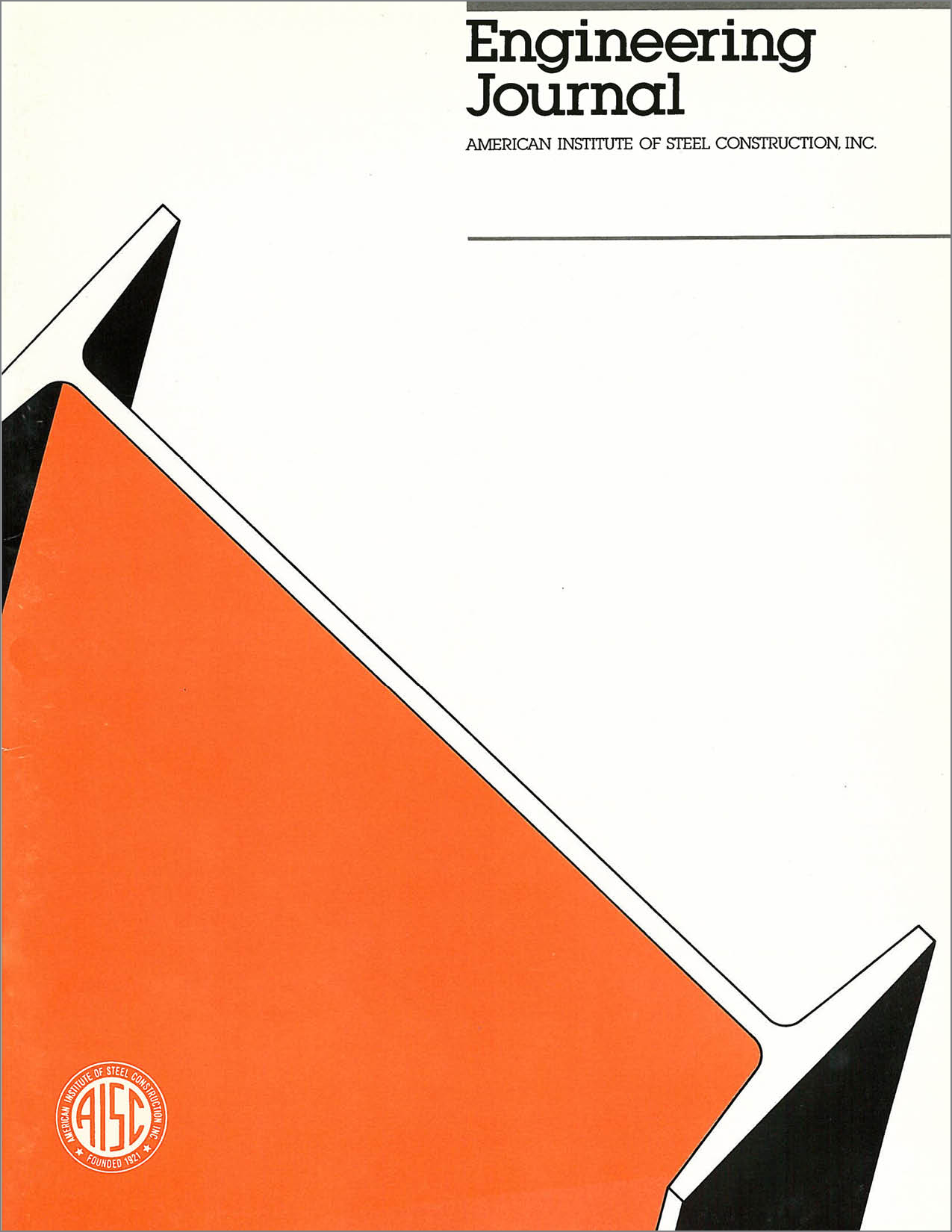Shear Lag Effects in Steel Tension Members
DOI:
https://doi.org/10.62913/engj.v30i3.618Abstract
The non-uniform stress distribution that occurs in a tension member adjacent to a connection, in which all elements of the cross section are not directly connected, is commonly referred to as the shear lag effect. This effect reduces the design strength of the member because the entire cross section is not fully effective at the critical section location. Shear lag effects in bolted tension members have been accounted for in the American Institute of Steel Construction (AISC) allowable stress design specification1 (ASD) since 1978. The 1986 load and resistance factor design specification2 (LRFD) and the 1989 ASD specification stipulate that the shear lag effects are applicable to welded, as well as bolted, tension members. Past research on the subject of shear lag has focused primarily on bolted tension members. Recently, more attention has been given to welded members, evident by their inclusion in the AISC specifications. Shear lag provisions for welded members were introduced into the specifications primarily because of a large welded hanger plate failure. To maintain a uniform approach to both welded and bolted members, the same provisions for shear lag in bolted members were applied to welded members. Additional requirements for welded plates were added. However, the application of the shear lag requirements to welded members has raised several questions. This paper examines shear lag in steel tension members in the following context. First, the background for the current AISC specification provisions is reviewed. Second, the results of an experimental research program in which 27 welded tension members were loaded to failure is presented. Third, based on the first two parts of the paper, recommended changes to the AISC specifications are presented.

